Crazy and Crazier, Part 4
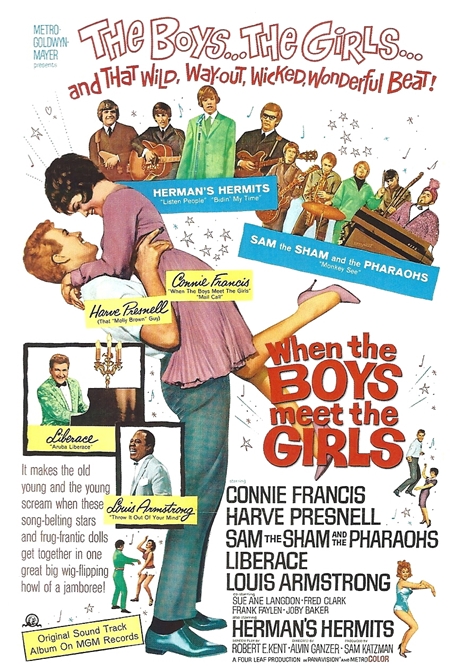 The 1960s were, in a literal if not a figurative sense, a golden age for movie musicals; they made more money (a total of over $250 million, real money back then — about $2.128 billion today) and won more awards (four best picture Oscars, best director for each one, 34 Oscars in the various craft categories, plus a more-than-respectable smattering of acting awards and nominations) than they ever had before or would again. There were West Side Story, Gypsy, The Music Man, Bye Bye Birdie, The Sound of Music, My Fair Lady, Mary Poppins, Thoroughly Modern Millie, How to Succeed in Business Without Really Trying, Half a Sixpence, Funny Girl, Oliver!…
The 1960s were, in a literal if not a figurative sense, a golden age for movie musicals; they made more money (a total of over $250 million, real money back then — about $2.128 billion today) and won more awards (four best picture Oscars, best director for each one, 34 Oscars in the various craft categories, plus a more-than-respectable smattering of acting awards and nominations) than they ever had before or would again. There were West Side Story, Gypsy, The Music Man, Bye Bye Birdie, The Sound of Music, My Fair Lady, Mary Poppins, Thoroughly Modern Millie, How to Succeed in Business Without Really Trying, Half a Sixpence, Funny Girl, Oliver!…
But there were also Babes in Toyland, Star!; Doctor Dolittle; Camelot; The Happiest Millionaire; Goodbye, Mr. Chips; Hello, Dolly!; Paint Your Wagon; Darling Lili; On a Clear Day You Can See Forever…huge (even bloated), expensive productions that contributed to that quarter-billion box office, but not enough to turn a profit for themselves.
There were other signs that, literal golden age or not, the figurative Golden Age (the real one) had passed. The industry had spent the entire 1950s staggering from the double blows of the advent of television and the U.S. Justice Department’s antitrust suit that broke up Hollywood’s efficient production/distribution/exhibition system. Desperate to balance the books, studios sharply curtailed or even eliminated the infrastructure that made musicals (always an expensive proposition) at least viable on a regular basis: music departments, rosters of contract players, specialty acts, in-house writers, orchestrators, dancers and dance directors. At MGM, for example, the Arthur Freed, Jack Cummings and Joe Pasternak units all withered on the vine. Freed produced his last musical, Bells Are Ringing, in 1960, and it barely broke even; after two more non-musicals (The Subterraneans and Light in the Piazza) he had pretty much retired. (He nursed a forlorn hope through the late ’40s, ’50s and early ’60s of producing Say It With Music, an epic biopic of Irving Berlin’s life and songs, to no avail.)
Tastes in popular music had also changed, and Hollywood’s old guard, though game to try, was ill-equipped to cope. In a metaphorical but very real sense, Hollywood was torn between West Side Story and The Sound of Music on one hand, and Jailhouse Rock and A Hard Day’s Night on the other.
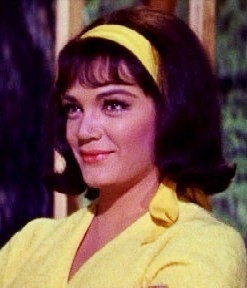 It was in this atmosphere, right smack in the middle of the decade, that Girl Crazy emerged in its third and final screen incarnation. It was planned as a vehicle for pop chanteuse Connie Francis. Her popularity was just beginning to wane under the onslaught of the Beatles-led British Invasion, but we can see that only in retrospect; at the time she seemed as popular as ever. And she was very popular indeed — the first female to have two consecutive number one hits (“Everybody’s Somebody’s Fool” and “My Heart Has a Mind of Its Own” in 1960) and the youngest entertainer to headline in Las Vegas and at New York’s Copacabana (that same year). Also in 1960, Francis made her screen debut in MGM’s Where the Boys Are (and had another big hit with the title tune). It was the custom in those days, when a singer had a hit song, to make the follow-up single as much like the hit as possible, so MGM and Francis followed Where the Boys Are with Follow the Boys. And that’s why, when the studio decided to revamp Girl Crazy for Connie Francis, the show got a new title (and a new song for Connie to croon): When the Boys Meet the Girls.
It was in this atmosphere, right smack in the middle of the decade, that Girl Crazy emerged in its third and final screen incarnation. It was planned as a vehicle for pop chanteuse Connie Francis. Her popularity was just beginning to wane under the onslaught of the Beatles-led British Invasion, but we can see that only in retrospect; at the time she seemed as popular as ever. And she was very popular indeed — the first female to have two consecutive number one hits (“Everybody’s Somebody’s Fool” and “My Heart Has a Mind of Its Own” in 1960) and the youngest entertainer to headline in Las Vegas and at New York’s Copacabana (that same year). Also in 1960, Francis made her screen debut in MGM’s Where the Boys Are (and had another big hit with the title tune). It was the custom in those days, when a singer had a hit song, to make the follow-up single as much like the hit as possible, so MGM and Francis followed Where the Boys Are with Follow the Boys. And that’s why, when the studio decided to revamp Girl Crazy for Connie Francis, the show got a new title (and a new song for Connie to croon): When the Boys Meet the Girls.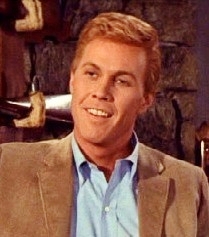 Connie’s co-star was Harve Presnell, a veteran of the opera and concert stage who had made a splash on Broadway in The Unsinkable Molly Brown, then won a Golden Globe for the movie version opposite Debbie Reynolds. At that stage of his career he was tall and handsome, with a lush baritone voice — a slightly younger, blonde version of Howard Keel. But his timing couldn’t have been worse: By 1965 not even Keel was getting enough work to keep him busy; he hadn’t made a musical since Kismet in 1955, and had segued into straight acting roles. Presnell would have a tougher time of that; as a screen actor he was a little stiff, without Keel’s comfort in front of a camera. He made one more major movie, stealing Paint Your Wagon from Clint Eastwood and Lee Marvin with his rendition of “They Call the Wind Maria”, then it was back to regional theater and Broadway tours until he returned to movies as a character actor in his 60s and 70s. Things worked better for him then; the stiffness that had looked a bit wooden in his youth seemed more like patrician dignity in his senior years, and he had a distinguished second career in movies (Fargo, Saving Private Ryan, Flags of Our Fathers, Evan Almighty) before dying of pancreatic cancer at 75 in 2009.
Connie’s co-star was Harve Presnell, a veteran of the opera and concert stage who had made a splash on Broadway in The Unsinkable Molly Brown, then won a Golden Globe for the movie version opposite Debbie Reynolds. At that stage of his career he was tall and handsome, with a lush baritone voice — a slightly younger, blonde version of Howard Keel. But his timing couldn’t have been worse: By 1965 not even Keel was getting enough work to keep him busy; he hadn’t made a musical since Kismet in 1955, and had segued into straight acting roles. Presnell would have a tougher time of that; as a screen actor he was a little stiff, without Keel’s comfort in front of a camera. He made one more major movie, stealing Paint Your Wagon from Clint Eastwood and Lee Marvin with his rendition of “They Call the Wind Maria”, then it was back to regional theater and Broadway tours until he returned to movies as a character actor in his 60s and 70s. Things worked better for him then; the stiffness that had looked a bit wooden in his youth seemed more like patrician dignity in his senior years, and he had a distinguished second career in movies (Fargo, Saving Private Ryan, Flags of Our Fathers, Evan Almighty) before dying of pancreatic cancer at 75 in 2009.First of all, there was what we shall charitably call the movie’s “creative team”. They were, almost to a man (and they were all men), a gaggle of second-rate hacks — from producer Sam Katzman through director Alvin Ganzer and writer Robert E. Kent to musical director Fred Karger. Katzman has a handful of memorable “B” titles (It Came from Beneath the Sea, Earth vs. the Flying Saucers), some low-camp legends (Rock Around the Clock, Cha-Cha-Cha Boom!) and a couple of lesser Elvis Presley vehicles on his shoddy resume, but by and large, we’re slumming even to mention his name. Ganzer directed only two features besides this one — The Girls of Pleasure Island (’53) and Three Bites of the Apple (’67) — in a career devoted almost exclusively to undistinguished piecework on this or that TV series.
In addition to the mediocrity (and less) of the men in charge — and perhaps because of it — When the Boys Meet the Girls has the air of a movie that simply doesn’t know why it is being made, who its target audience is, or even what it is selling. For example, compare the three posters with which I began my post on each Girl Crazy picture:
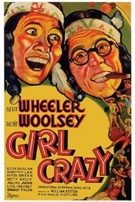
The poster for Girl Crazy (1932) knows exactly what it’s selling: For better or for worse (and it seemed like a good idea at the time), the big draw is Wheeler and Woolsey; their faces and names dominate the graphics completely, suggesting hilarity unrestrained.
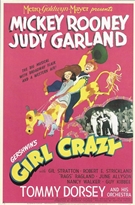
It’s the same with Girl Crazy (1943): Mickey Rooney, Judy Garland, and a bonus plug for Tommy Dorsey and his band, with a cartoon bucking cow (a cow??) offering the promise of a barrel of rollicking fun.
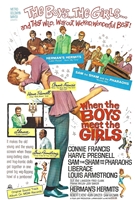
Now When the Boys Meet the Girls. I’ve reproduced each poster small, deliberately, to show that for the ’32 and ’43 posters the main idea still comes through. But with this one you can barely even make out the title.
Now give your eyes a break and scroll back up to the larger version of the When the Boys poster. Can you even guess what that poster is selling? Herman’s Hermits? Sam the Sham and the Pharaohs? Or what? Connie and Harve get top billing (under the title), and two figures meant to represent them dominate the poster, more or less, but only in closed-off profiles that barely resemble them; Presnell’s image doesn’t look like him at all. And did you notice that oh-so-fab blurb in the lower left corner? “It makes the old young and the young scream when these song-belting stars and frug-frantic dolls get together in one great big wig-flipping howl of a jamboree!” Good grief. Are we ready to howl and flip our wigs?
And say, how about that lineup of featured acts? Did you ever imagine you’d see them all together in one place? Besides Connie and Harve to carry the boy-meets-wins-loses-and-wins-girl-back plot, you have…
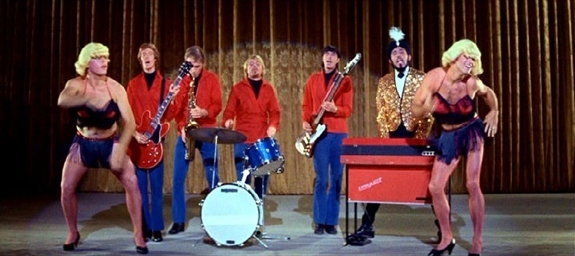
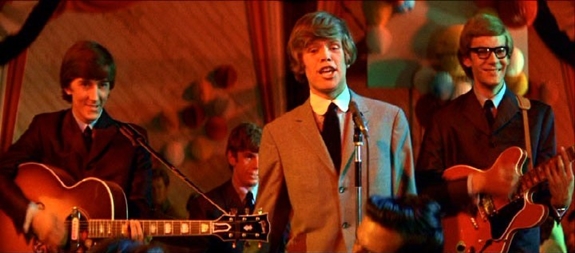
…Herman’s Hermits, with special “Also Starring” billing, no less. Here they’re singing “Listen, People”, which was one of their hits, and the only hit to come out of the movie that wasn’t already a Gershwin standard. Peter Noone (“Herman”) even had a few lines of dialogue, and the Hermits also delivered “Bidin’ My Time”. But more on that later; for now, back to the lineup…
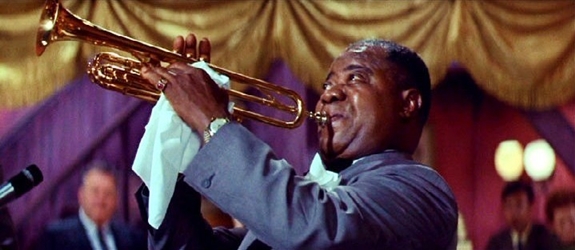
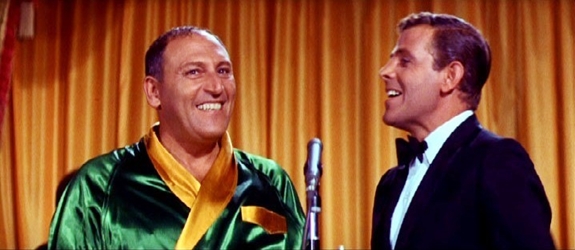

Seriously, can’t you just smell the sweaty desperation behind this kind of programming? This isn’t a vaudeville or a variety show, it’s Sam Katzman and his minions throwing everything they can think of at the screen, all the while hoping to God someting will stick.

Does any of it stick? Well, Liberace is a hoot, for starters. But there are other rewards on hand. Both Harve Presnell and Connie Francis have a quite creditable go at “Embraceable You” — starting with Harve, on the occasion of Danny Churchill first setting eyes on the winsome Ginger…
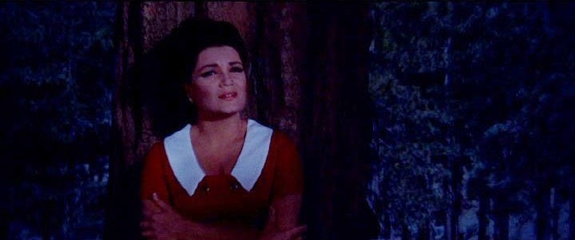
…then later Connie, on a moonlit night after Ginger has gotten to know Danny and started to fall for him.
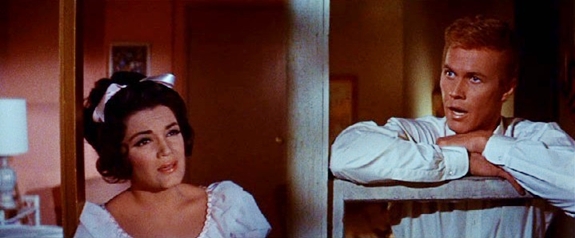
Later still, after the usual misunderstanding — this time prompted by the arrival of Danny’s gold-digging ex-girlfriend Tess Raleigh (Sue Ane Langdon) — Harve and Connie do very nicely indeed on “But Not for Me”. It’s a sort of separate duet with each taking a verse, first Ginger in her bedroom, then Danny in his, then the two together, joined by a split screen — the movie’s one creative use of the Panavision frame. True, Connie Francis and Harve Presnell don’t measure up to Judy Garland on either of these songs, but there’s no shame in that — nobody could. On both numbers, Connie and Harve are in their element and entirely at ease; as a result, their performances of the songs are simple, heartfelt and effective. Liberace’s number may be the most fun in When the Boys Meet the Girls, but “Embraceable You” and “But Not for Me” are the most Gershwin. If you saw only the clips of these two songs, you would come away with the impression that When the Boys Meet the Girls is a lot better than it really is.
Things get a bit rockier when Connie and Harve launch into “I Got Rhythm” — here, as in 1932, the movie’s one major production number. Once again, they sing “I’ve Got Rhythm” — an annoyance, but a recurring one where this song is concerned. More troublesome this time is the pace and style of the number, a laid-back, casual approach that tries for a kind of ring-a-ding hipster cool, like Frank Sinatra in his finger-snapping-loose-collar-narrow-tie-sportcoat-slung-over-the-shoulder phase. No disrespect to Old Blue Eyes, but it doesn’t exactly make for a dynamic musical delivery:
“I’ve [beat! beat!] got rhy-(beat!)-thm (beat! beat!)…”

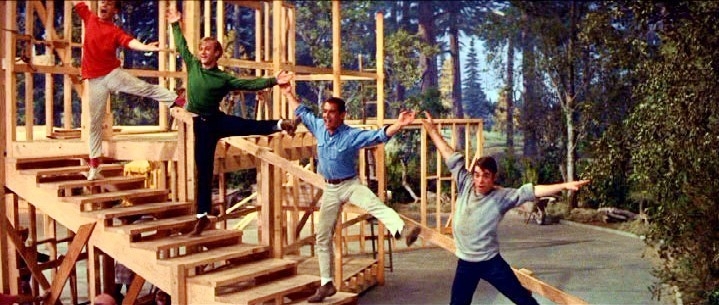
So naturally, the boys…
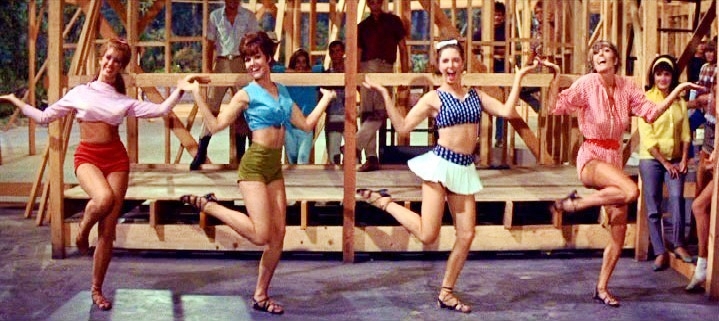
…and the girls take over the dancing chores. There’s nothing wrong with any of this, exactly, but it’s too self-consciously smooth and loosey-goosey to whip up any excitement on the wide screen. The number is like something pulled together in a few days to back up a guest star on The Andy Williams Show. You find yourself longing to hear Tommy Dorsey and his blaring, driving brass and to see Busby Berkeley’s caffeinated choristers with their whips, guns and stomping military precision.
This lackadaisical rendition of “I Got Rhythm” brings us to the man who was probably the most resolutely third-rate personage involved with When the Boys Meet the Girls. His name was Fred Karger, and his on-screen credit is “Music Scored and Conducted By”. Karger had spent years in the music department at Columbia Pictures making hardly a ripple; his biggest coup to date had been writing the tune for “Gidget”. On When the Boys Meet the Girls, besides scoring and conducting, he wrote the song “Mail Call” (with Ben Weisman and Sid Wayne), which did not add to Connie Francis’s string of hits.
It’s safe to assume that Sam the Sham, Louis Armstrong and Liberace all tended to their own music without any interference, so Karger’s work here probably boils down to the treatment of the five Gershwin songs. He neither helped nor hindered Connie and Harve with his arrangements of “Embraceable You” and “But Not for Me”, and his pointless rewriting of “Treat Me Rough” didn’t keep Sue Ane Langdon from squeezing a little fun out of it with her kitten-with-a-whip delivery. Otherwise, Karger was careless, even downright sloppy.
I’ve already mentioned Karger’s mushy, low-watt arrangement of “I Got Rhythm”, which offered scant inspiration to choreographer Earl Barton and his dancers. Karger was also careless with Ira Gershwin’s lyrics, beyond the addition of that “ve” to the title of “I Got Rhythm”; he fiddled with almost every line Ira wrote, either killing the rhyme (“There’s no regrettin’/When I’m set-ting“) or killing the sense (changing “Although I can’t dismiss the memory of her kiss” to “And yet I can’t dismiss” in “But Not for Me”) time and time again — then repeating the mistake, as if to prove he did it on purpose.
 But one of Karger’s bright ideas really takes stupidity to undreamed-of heights, and that’s in his treatment of “Bidin’ My Time”. The number is given to Herman’s Hermits, sitting on and around a flatbed truck while the rest of the young cast gets busy building Ginger’s dude ranch. At first things seem to go well with the song: it’s an almost witty idea, handing this lazy cowboy lullaby to these slightly nerdy lads from Manchester. Peter Noone’s wispy tenor voice slides nicely into the verse, then the refrain moves into a ricky-ticky soft-samba rhythm similar to the Beatles’ version of “Till There Was You”. Then, trouble. Now as just about everybody but Fred Karger and Peter Noone knew by 1965, the song is supposed to go like this:
But one of Karger’s bright ideas really takes stupidity to undreamed-of heights, and that’s in his treatment of “Bidin’ My Time”. The number is given to Herman’s Hermits, sitting on and around a flatbed truck while the rest of the young cast gets busy building Ginger’s dude ranch. At first things seem to go well with the song: it’s an almost witty idea, handing this lazy cowboy lullaby to these slightly nerdy lads from Manchester. Peter Noone’s wispy tenor voice slides nicely into the verse, then the refrain moves into a ricky-ticky soft-samba rhythm similar to the Beatles’ version of “Till There Was You”. Then, trouble. Now as just about everybody but Fred Karger and Peter Noone knew by 1965, the song is supposed to go like this:“I’m bidin’ my ti–ime
‘Cause that’s…the kinda guy I–I’m…”
But no. Instead we get:
“I’m biding my ti–ime
‘Cause that’s…the kind of guy I…am…”
If there is such a thing as lyrical tone-deafness, this is surely it. It not only kills the rhyme, it kills the whole joke of the song. It’s like that old comedy routine of the clueless singer tackling the Gershwins’ “Let’s Call the Whole Thing Off” for the first time: “You say ee-ther, and I say ee-ther / You say nee-ther, and I say nee-ther…” Only here it is, so to speak, with a straight face. After that clunker, nothing Herman or the Hermits can do will save the song; we just have to cringe our way through to the end. The bumbling Fred Karger was as far from Roger Edens and Georgie Stoll as anyone could get and still be able to read music (assuming Karger could); this proves it.
On that sour note I’ll close this look at When the Boys Meet the Girls. As I said, the picture’s not a total loss, thanks to the talents of Connie Francis and Harve Presnell, plus a certain amount of blind monkeys-and-typewriters luck. Twenty years earlier, both Connie and Harve might have left a stronger legacy. Especially Connie; with the guidance of a Roger Edens, and with more directors like Henry Levin and Richard Thorpe (on her first two pictures) and fewer like Alvin Ganzer (on this one), she might have had the nurturing that Doris Day got over at Warner Bros., and might have made more than the four movies she did (When the Boys Meet the Girls was her last). Harve would still have had to contend with Howard Keel, but there was room for a deep talent pool at MGM in the ’40s and early ’50s. By the time Harve showed up in 1964, or even Connie in 1960, the support system just wasn’t there, and their clear talent didn’t get the attention it needed and deserved.
* * *
Well, friends, there you have it, just as I promised at the beginning of this series — the full arc of the Golden Age of the Hollywood Musical, encapsulated in the fortunes of one legendary Broadway show:
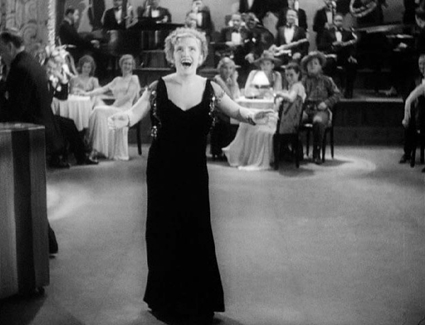
Girl Crazy (1932) was the product of a time when musicals looked passe, so the deathless Gershwin score was shouldered aside to make room for a brand of cornball comedy that looked like the coming thing. But the musical was poised on the cusp of a Great Revival; the talent was present and in good working order, though it hadn’t found its footing yet, and the techniques that would make the Hollywood musical something distinctly different from its Broadway cousin were still being discovered and developed.
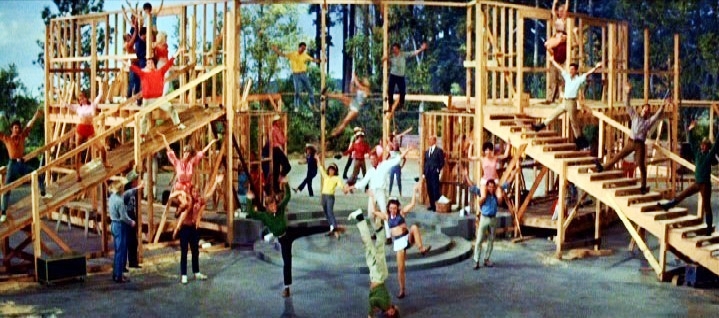
A scant third-of-a-century later came When the Boys Meet the Girls — a movie not without talent, but with a vacuum behind the scenes — and at mighty MGM, no less. Arthur Freed may have retired broken by disappointment, but Jack Cummings and Joe Pasternak were still active, as were Roger Edens, Georgie Stoll, and directors like Vincente Minnelli, Stanley Donen, Charles Walters, George Sidney. You get what you pay for, and MGM wasn’t willing to pay for them; what they were willing to pay for was a gang of humdrum nonentities who didn’t know what they were doing — and that’s what they got. It was as if Freed, Edens, Cummings, Pasternak et al. had cleaned out their offices, tucking the studio’s only copies of How to Make a Movie Musical into their briefcases before turning out the lights and locking the door.
But in between those two — that was a whole other story. The stars (in every sense of the word) were perfectly aligned, and the final product could hardly miss because it was designed not to miss. Designed by producer Arthur Freed, who had come to movies with sound and stretched his producer’s muscles first on The Wizard of Oz; designed by Roger Edens and Georgie Stoll, who had been with the show on Broadway and knew in their bones and fingertips the vitality of the Gershwin score; designed by Busby Berkeley, who had jump-started the Golden Age and still knew a trick or two, whether Roger Edens liked it or not. And it was designed for Mickey Rooney and Judy Garland, just about the most talented individuals who ever faced a camera. Girl Crazy (1943) was what happened when the factory’s machinery was all in place and well-tended: The vehicle came off the line humming like a top, and if it had to fly, it soared.
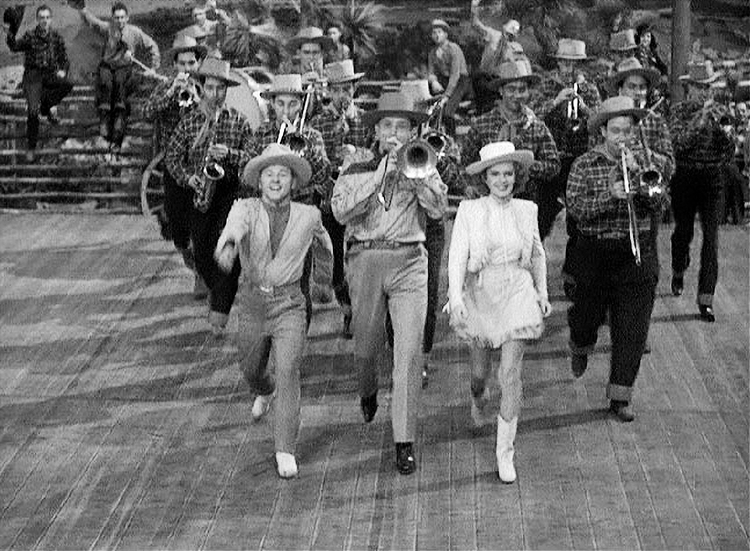
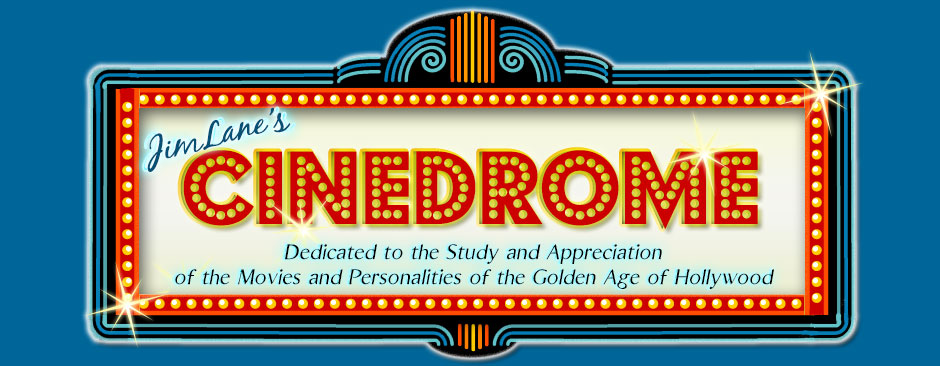
It was, in fact, June Ritchie; and she was just about the only fine thing in the piece. There was some other fun stuff, like a real train and a real carriage pulled by a real horse through an impressive burning of Atlanta. Beyond that, I can't recall a single song or performance. And you're right…Harve never had a chance.
Thanks, Jean! Thanks too for the report on that benighted musical version of Gone With the Wind. That whole thing struck me as a fool's errand even at the time; now, looking back, it seems doubly so for poor Harve, trying to be a singing Clark Gable. I have no doubt he was just as you say, but really, could anybody have pulled it off? (The same goes for whoever played Scarlett — wasn't it Leslie Ann Warren?)